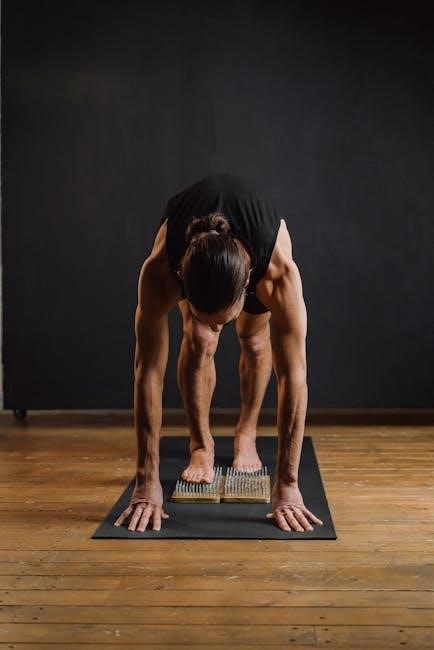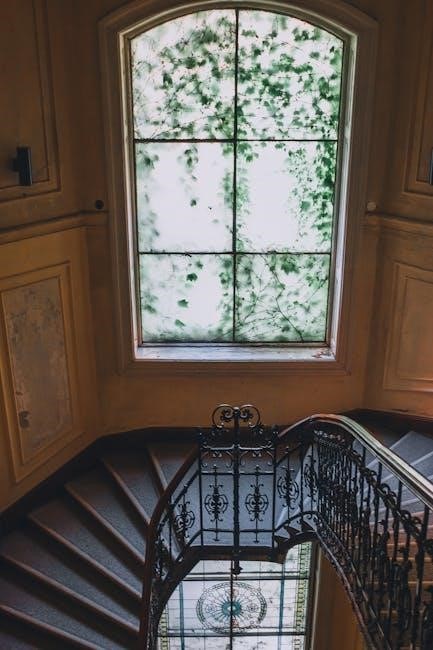step by step guide to gel nails
Gel nails are a popular cosmetic enhancement offering durability and a high-shine finish. Made from a gel-like substance cured under UV light, they provide a long-lasting, chip-resistant solution for nail beauty.

What Are Gel Nails?
Gel nails are a type of artificial nail enhancement made from a gel-like substance cured under UV or LED light. Unlike traditional acrylics, gel nails are less damaging and offer a high-shine, long-lasting finish. They can be applied directly to natural nails or used to create extensions. The gel is a mixture of monomers and oligomers that harden when exposed to UV light, forming a durable and glossy layer. Gel nails are popular for their flexibility and resistance to chipping, making them a favorite for those seeking a professional, salon-quality look at home or in a nail studio.
Benefits of Gel Nails
Gel nails offer numerous advantages, including long-lasting wear without chipping or fading. They provide a high-shine finish and can be applied in various colors and finishes. Gel nails are less damaging than acrylics, making them suitable for natural nails. They are also versatile, allowing for intricate designs and art. Additionally, gel nails are quick to apply and cure under UV light, making the process efficient. Their durability ensures they remain pristine for up to two weeks, making them ideal for special occasions or everyday use. Overall, gel nails combine aesthetics, durability, and low maintenance, making them a popular choice for nail enthusiasts.

Preparing for Gel Nails
Proper preparation for gel nails includes trimming, buffing, and pushing back cuticles to ensure a smooth surface and a professional finish for long-lasting wear.
Trimming and Shaping Your Nails
Trimming and shaping your nails is the first step in preparing for gel nails. Use nail clippers to trim your nails to the desired length, ensuring they are even. Next, use a nail file to shape your nails into your preferred style, such as oval, square, or almond. Filing in one direction only will prevent splitting or weakening the nails. Keep your natural nail shape in mind to avoid excessive filing, which can cause damage. Properly shaped nails provide a smooth base for the gel application, ensuring a professional and long-lasting finish.
Buffing Your Nails
Buffing your nails is a crucial step to ensure proper adhesion of the gel polish. Using a buffer block, gently buff the surface of your nails to remove any shine and create a light texture. This helps the gel base coat adhere evenly. Be careful not to buff too aggressively, as this can weaken the nail. Buffing also smooths out ridges, creating a uniform surface for the gel application. After buffing, wipe your nails with a lint-free wipe or cotton ball to remove any dust or debris. This step ensures a strong bond between your natural nail and the gel polish.

Pushing Back Cuticles
Pushing back your cuticles is essential for a clean and professional gel nail application. Use a cuticle pusher or an orange stick to gently push back the cuticles around each nail. Soak your fingers in warm water or apply a cuticle remover to soften the cuticles first, making them easier to push back. Be careful not to push too hard, as this can cause bleeding or irritation. After pushing back, wipe away any excess dead skin with a lint-free wipe. This step ensures the gel polish adheres properly and creates a neat, polished look around the edges of your nails.

Cleaning the Nails
Cleaning the nails is crucial for a successful gel application. Use lint-free wipes soaked in nail cleanser to remove dirt, oils, and residue. This ensures a clean surface for the gel to adhere properly and promotes long-lasting results.
Removing Old Nail Polish
Removing old nail polish is essential for a fresh gel application. Start by soaking a cotton pad with acetone and placing it on the nail. Wrap aluminum foil around the finger to secure the pad, ensuring snugness without tightness. Let it sit for 10-15 minutes to allow the acetone to dissolve the gel. Gently scrape off the polish using a cuticle pusher or orange stick, working from one side of the nail to the other. Avoid using force to prevent damaging the nail surface. Repeat if necessary until all polish is removed, then rinse hands thoroughly with soap and water.
Sanitizing the Nail Area
Sanitizing the nail area is crucial to prevent infections and ensure a clean surface for gel application. Use a lint-free wipe soaked in nail cleanser or isopropyl alcohol to gently clean each nail, cuticles, and surrounding skin. Remove any oils or residues from previous treatments. Pay special attention to the areas around the cuticles and under the nail tips, where bacteria often accumulate. Allow the area to air dry completely before proceeding. This step ensures the gel adheres properly and reduces the risk of lifting or infection, promoting a long-lasting and professional-looking finish.
Applying the Base Coat
Apply a thin, even layer of base coat to each nail, ensuring full coverage. Cure under UV light to create a strong foundation for the gel polish.
Choosing the Right Base Coat
Selecting the right base coat is crucial for a successful gel nail application. Opt for a high-quality, nourishing base coat that promotes nail health and adhesion. Look for formulas enriched with ingredients like keratin or vitamins to strengthen your nails. Avoid bases containing harsh chemicals that can damage your nails over time. A good base coat should be clear and have a smooth consistency for even application. It’s also important to choose a base coat that is specifically designed for gel nails, as it will ensure proper bonding and longevity of your gel polish.
Applying the Base Coat Correctly
Applying the base coat correctly is essential for a smooth gel nail application. Start by ensuring your nails are clean and dry. Using a lint-free wipe, gently remove any oils or residue from the nail surface. Dip the brush into the base coat, wiping off any excess on the bottle’s rim. Paint a thin, even layer starting at the center of your nail, moving toward the tip in smooth strokes. Avoid getting the base coat on your cuticles or skin. Cure the base coat under the UV or LED lamp for the recommended time, usually 30 seconds to a minute, before proceeding.
Applying Gel Polish
Select your desired gel polish color and dip the brush, wiping excess. Paint a thin, even layer from the center to the tip, curing under UV light.
Selecting Gel Polish Colors
Choosing the right gel polish color enhances your manicure’s appeal. Consider personal style, occasion, and skin tone. Neutral shades like nude or beige complement most looks, while bold colors make a statement. Pastel hues are ideal for a soft, elegant appearance, and metallic or glitter finishes add vibrancy. Test colors on your nails or a swatch wheel to ensure the shade complements your tone. Trends like chrome or mirror finishes are popular for a modern look. Always ensure the color is applied in thin, even layers for optimal results and long-lasting wear. The finish should be smooth and chip-resistant after curing under UV light.
Applying the First Layer of Gel Polish
Apply a thin, even layer of gel polish starting at the center of your nail. Gently sweep the brush from the cuticle to the tip, covering the entire nail surface. Avoid getting polish on cuticles or skin. Use light strokes to ensure smooth coverage. Cure the layer under the UV lamp for the recommended time, usually 30 seconds to a minute. Repeat if necessary for opacity, but keep the layer thin to prevent peeling. Proper application ensures a durable, professional finish. Always follow the manufacturer’s instructions for curing times and layer thickness. This step is crucial for a long-lasting gel manicure.

Finishing Touches
Apply a thin top coat to seal the gel polish, ensuring a glossy finish. Use a lint-free wipe to remove excess gel around the cuticles for a clean look.
Applying the Top Coat
Apply a thin, even layer of top coat to seal the gel polish and add a glossy finish; Ensure the brush strokes are smooth and cover the entire nail surface. Cure the top coat under the UV or LED lamp for the recommended time, usually 30 seconds to a minute. Avoid smudging by letting it dry completely. Use a lint-free wipe dipped in nail cleanser to gently remove any excess gel around the cuticles. This step ensures a clean, professional finish and extends the wear of your gel nails.

Cleaning Up Excess Gel
After curing the top coat, use a lint-free wipe or cotton ball soaked in nail cleanser to gently remove excess gel around the cuticles and nail edges. Dip the wipe in cleanser and lightly sweep it across the nail border, ensuring not to touch the cured gel. This step prevents smudging and ensures a neat, professional finish. For stubborn areas, a small brush dipped in cleanser can be used to precision clean. Finally, apply a cuticle oil to hydrate the nail area and complete the look. This final touch ensures your gel nails are clean and well-maintained, lasting longer and looking pristine.

Aftercare for Gel Nails
Proper aftercare ensures longevity. Avoid harsh chemicals, moisturize cuticles, and handle nails gently to prevent chipping. Regular touch-ups maintain appearance and prevent lifting.

Maintaining Gel Nails
Maintaining gel nails is essential for their longevity. Regular checks can help identify early signs of damage, such as lifting or chipping. Gently wash hands with mild soap and avoid exposure to harsh chemicals. Moisturize your cuticles and nails with oil to keep them hydrated and healthy; Avoid using nails as tools to prevent breaking. Touch-ups every two weeks are recommended to repair minor damages and maintain a polished look. By following these care tips, gel nails can remain vibrant and intact for an extended period.

Avoiding Damage to Gel Nails
Avoiding damage to gel nails requires careful attention to daily habits. Refrain from using nails as tools, as this can cause chipping or lifting. Exposure to harsh chemicals, such as detergents or cleaning products, should be minimized, and gloves are recommended during such activities. Avoid excessive water exposure, as it can weaken the gel. Never pick at the gel polish, as this can damage the nail surface. Additionally, avoid using acetone-based products near the nails. By adopting these protective measures, you can preserve the integrity and appearance of your gel nails, ensuring they remain attractive and durable for a longer period.


